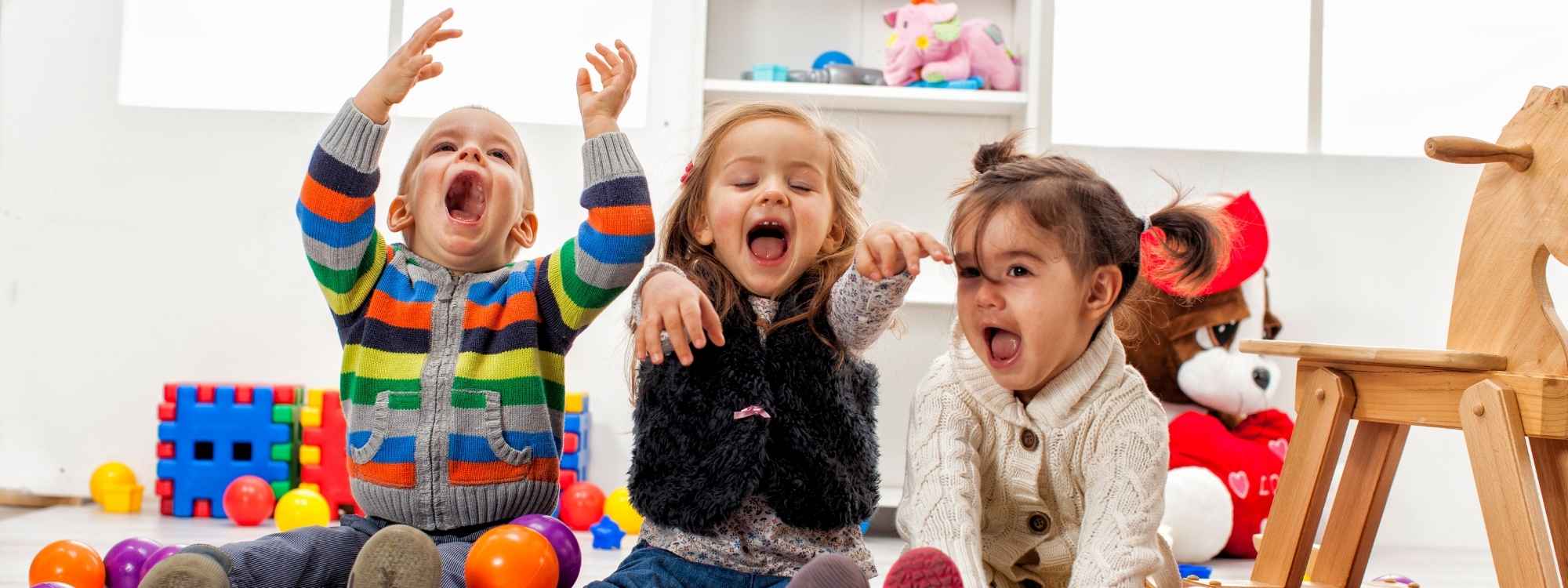Hand Flapping Autism: Causes, Meaning, and Support
Introduction to Autism Spectrum Disorder
Autism Spectrum Disorder (ASD) is a complex developmental condition that affects a child’s ability to communicate, interact socially, and process sensory information. Signs of autism can appear as early as 18 months and often include behaviors that differ from typical developmental patterns. One common example is hand flapping in autism, a type of repetitive movement that may signal sensory processing differences. Understanding behaviors like hand flapping in autism can help parents and caregivers better support their child’s needs. Since every child with autism is unique, early intervention and personalized support are essential to fostering healthy development and emotional well-being.
An autism diagnosis typically involves evaluating repetitive behaviors, language use, social skills, and developmental milestones. Recognizing the early signs, including stimming behaviors, allows families and healthcare providers to implement tailored strategies that support the child’s engagement in growth across home, school, and community settings.
What Is Hand Flapping?
Hand flapping is a repetitive hand movement where a child moves their hands rapidly up and down, often in response to excitement, stress, or sensory overload. It’s one of the most visible self-stimulatory behaviors, also known as “stimming,” that many autistic children use to regulate their emotions and sensory input.
Although hand flapping is commonly associated with autism spectrum disorder, it is not exclusive to autistic people. Some neurotypical children may also flap their hands when excited. However, when this repetitive motion is frequent, intense, or combined with other signs of autism, it may be part of a broader developmental pattern.
Hand flapping behavior can serve as a form of self-expression or a coping mechanism in overwhelming environments. Understanding this behavior within the context of the autism spectrum helps families respond with empathy and insight, rather than concern or correction.
Autism Hand Flapping and Stimming
Stimming refers to self-stimulatory behaviors that help individuals with autism manage sensory input, stress, or emotional overload. Hand flapping is just one example of these repetitive behaviors, which may also include body rocking, spinning, verbal noises, nail biting, or throwing objects.
Autistic children may engage in stimming for many reasons. Some children stim when they feel excited or overstimulated, while others use it to block out bright lights, loud noises, or chaotic environments. These behaviors are not harmful in and of themselves. They often serve a valuable function by helping the child self-regulate and feel safer in their surroundings.
Understanding the function of a child’s stimming behaviors, rather than simply focusing on reducing stimming behaviors, allows parents and therapists to provide more compassionate and effective support.
Auditory Stimming and Its Effects
Auditory stimming is a specific type of self-stimulation involving sound. This can include humming, repeating phrases, making clicking or other verbal noises, or reacting strongly to certain sounds. Like hand flapping, auditory stimming behaviors help many autistic children self-regulate their emotions and sensory experiences.
Some children may use auditory stimming as a way to express excitement, manage strong emotions, or block out overwhelming sensory input. Others may enjoy the rhythmic or predictable nature of specific sounds. In environments with excessive sensory information, such as crowded classrooms or busy stores, auditory stimming can help reduce stress and offer a sense of control.
It’s important to observe whether the behavior is interfering with the child’s daily life or communication. If not, it may simply be a helpful tool for emotional regulation and self-expression.
Emotional Regulation in Autistic Children
Emotional regulation refers to a child’s ability to manage and respond to emotional experiences in a healthy and controlled way. Many autistic children experience difficulty with emotional regulation due to heightened sensitivity to sensory input or challenges with expressive communication.
Behaviors like hand flapping, auditory stimming, or tactile stimming (e.g., rubbing soft textures or using fidget toys) often serve as coping mechanisms. These actions can help children stimulate, release pent-up energy, calm themselves during transitions, or handle overwhelming emotions.
Supporting emotional regulation requires a proactive and accepting approach. This might include using visual schedules, providing sensory-friendly environments, offering positive reinforcement, and helping children identify specific triggers. Over time, tailored strategies can help children thrive both emotionally and socially.
Children with Autism and Hand Flapping Behavior
Hand flapping behavior is common in autistic children and can be triggered by excitement, sensory overload, frustration, or changes in routine. It is often a repetitive behavior that supports self-regulation, rather than something that needs to be immediately “fixed.”
Many children use hand flapping to communicate non-verbally or to express joy, stress, or anticipation. While it might be unfamiliar or distracting to others, it often plays a meaningful role in helping the child cope.
Rather than focusing on stopping hand flapping, the more productive approach is to observe when and why it happens. Does the child flap their hands in noisy environments? During transitions? When overwhelmed by bright lights? Understanding these patterns can lead to more effective support and help the child feel safe and seen.
The Autistic Child and Sensory Overload
Sensory overload occurs when one or more senses become overwhelmed by stimuli like bright lights, loud sounds, or intense smells. For many autistic children, these everyday sensory experiences can be deeply uncomfortable or even painful.
In response, a child may engage in stimming behaviors like hand flapping, covering ears, or repetitive movements. These actions offer relief and help the child filter or block out distressing sensory input.
Supporting a child experiencing sensory overload involves creating a predictable, calming environment. Practical strategies include:
- Reducing background noise and visual clutter
- Providing access to sensory-friendly tools (e.g., noise-canceling headphones, fidget toys)
- Allowing breaks in quiet spaces
- Monitoring and identifying sensory triggers
These strategies can help reduce stress, support emotional well-being, and improve the child’s daily life experience.
Autism Spectrum and Hand Flapping
Hand flapping is a well-known behavior associated with autism spectrum disorder, but it is not exclusive to autistic individuals. Children without autism may also flap their hands, particularly in early developmental stages. What distinguishes hand flapping autism behavior is its frequency, context, and connection to other symptoms.
Within the autism spectrum, hand flapping may be part of a complex relationship between self-regulation, sensory input, and emotional needs. For example, a child may flap their hands repeatedly in high-stimulation environments as a way to feel grounded. Others may do it when excited or as a response to unfamiliar social situations, and while it’s not self-harm, it may suggest a need for support.
Understanding the child’s unique behavioral profile and supporting their sensory needs can help families and educators develop more effective responses.
Hand Flapping and Emotional Regulation
Hand flapping is often a form of emotional regulation in autistic children. Whether the child is expressing happiness, frustration, or anxiety, the movement helps release internal tension and manage strong emotions.
Rather than viewing hand flapping as disruptive or undesirable, caregivers can interpret it as a sign that the child is trying to cope with an emotion they may not yet be able to verbalize. Supporting this behavior, within safe limits, helps preserve the emotional well-being and autonomy of children with autism.
Tailored strategies, such as teaching replacement behaviors when appropriate or offering calming sensory input, can support a child’s development without forcing them to mask their needs.
Supporting Autistic Children and Their Families
Supporting an autistic child requires a compassionate, individualized approach that honors the child’s sensory needs, emotional landscape, and communication style. For many families, understanding stimming behaviors like hand flapping is the first step in building a more supportive environment.
Care strategies may include:
- Enrolling in Applied Behavior Analysis (ABA) therapy for structured skill development
- Engaging in parent training programs to better understand and manage behaviors
- Working with specialists to address sensory sensitivities and social skills
- Creating consistent routines to reduce anxiety and increase predictability
When families receive the right education and tools, they are better equipped to foster their child’s growth and help them thrive.
Resources for Parents and Caregivers
Parents and caregivers of autistic children have access to a range of resources to support their child’s developmental journey. These include:
- In-home ABA therapy services, which provide personalized strategies in familiar environments
- Diagnostic evaluations, which offer clarity on a child’s strengths and challenges
- Parent training and support groups, which foster community and shared learning
- Online guides and educational tools focused on autism care and sensory regulation
It’s important to work closely with your child’s pediatrician or therapist to build a plan that reflects their unique needs and goals.
Conclusion
Understanding hand flapping in autism requires a shift from correction to compassion. These repetitive movements are often meaningful, functional, and emotionally grounding for many autistic children. Instead of focusing on stopping the behavior, families, caregivers, and professionals can aim to understand its purpose and provide sensory-safe, emotionally supportive environments.
Noticing hand flapping or other stimming behaviors in your child? At Champions ABA, we understand that every behavior tells a story, and we’re here to help you listen. Our team provides individualized evaluations and autism support designed around your child’s unique needs. From early intervention to in-home ABA therapy, we walk alongside families with empathy, expertise, and practical strategies. Call (877) 242-1744 or visit our website to explore how we can help your child thrive through understanding, not judgment.
FAQs
Is hand flapping normal or autism?
Hand flapping can be seen in both autistic and non-autistic children. In autism, it is often a form of stimming that helps manage sensory input or emotions. If it’s persistent and occurs alongside other signs of developmental delay, it may be part of an autism diagnosis.
At what age is arm flapping a concern?
Arm flapping in toddlers can be typical, especially during moments of excitement. However, if it continues beyond age 2 or appears with other symptoms like delayed speech or poor eye contact, it may warrant evaluation by a pediatrician or specialist.
What are the warning signs of autism in a 2-year-old?
Early signs may include limited eye contact, delayed speech, lack of interest in social play, repetitive behaviors like hand flapping, and challenges with transitions or routines. A professional assessment is recommended if multiple signs, including other repetitive behaviors, are present.
How to stop hand flapping in autism?
Rather than trying to stop hand flapping, it’s better to understand its purpose. If the behavior is safe and helps the child self-regulate, it may not need to be changed. In cases where it interferes with learning or social interaction, a therapist can help introduce alternative coping strategies.



